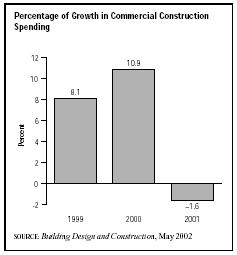SIC 1799
SPECIAL TRADE CONTRACTORS, NOT ELSEWHERE CLASSIFIED
The special trade contractors, not elsewhere classified industry is comprised of a plethora of firms that provide a broad range of miscellaneous construction services. Examples of industry activities include bathtub refinishing, gasoline pump installation, grave excavation, swimming pool construction, post hole digging, wallpaper stripping, mobile home setup, house moving, fire escape installation, bowling alley construction, artificial turf installation, and sandblasting.
NAICS Code(s)
235210 (Painting and Wall Covering Contractors)
235920 (Glass and Glazing Contractors)
562910 (Remediation Services)
235990 (All Other Special Trade Contractors)
The special trade contractors industry includes roughly 25,000 establishments according to the most recent data available from the U.S. Census Bureau. The average firm is small, employing less than 10 people. Annual industry revenues total roughly $20 billion.
While this diverse industry is hard to classify, a Department of Commerce survey notes that the industry's leading business category (based on value of construction work) is other commercial buildings, such as stores, restaurants, and auto service stations. This category is followed closely by outdoor swimming pools, industrial buildings and warehouses, fencing, single-family houses, and office buildings. A variety of other construction work accounts for the remainder of the total.
Although each sector of the industry is impacted by different factors, most specialty contractors are heavily dependent upon housing starts or new commercial and institutional construction. During the mid-1980s most contractors enjoyed steady expansion as commercial and residential building flourished. Likewise, when housing starts and commercial development stalled in the late 1980s and early 1990s, many contractors suffered immense setbacks. Total U.S. construction expenditures, in fact, actually declined 10 percent in inflation adjusted dollars between 1986 and 1992.
However, the construction industry saw strong growth between 1992 and 1999, as the general economy recovered, interest rates stayed relatively low, and housing starts boomed. For example, after dropping to just 1.01 million in 1991, single family and multi-family housing starts in the United States rose every year to 1.46 million in 1994. While starts dropped back to 1.35 million in 1995, they rose again to 1.45 million in 1996 and

were about 1.64 billion in 1999, a two-decade high. By 2002, U.S. housing starts had climbed to 1.7 billion, 1.35 billion of which were for single-family homes.
Another industry sector, home remodeling, had grown into a $153 billion industry by 2002. Growth in this segment was expected to average roughly 5 percent per year, due in part to rising home values, against which consumers could borrow. This forecast boded well for special trade contractors, many of whom served this market segment.
However, nonresidential construction began to slow considerably in the early 2000s in response to recessionary economic conditions in the United States. Spending on industrial construction declined by 3.2 percent in 2001, and commercial construction spending dipped 1.6 percent that year; institutional construction, bolstered by a few strong segments such as healthcare construction, grew 10 percent in 2001. However, even institutional construction spending had started to wane by 2003; in fact, total nonresidential construction spending dropped by 6 percent that year. Particularly hard hit throughout the early 2000s was office construction due to the over-building that took place during the late 1990s. Spending on office building construction declined from $47.5 billion in 1999 to $39 billion in 2003. During this time period, the office vacancy rate nearly doubled from 8.9 percent to 16.5 percent.
Most companies in this industry were small, privately held, local enterprises. There were several industry leaders, though many of them also had interests in other industries. As of 2003, leaders in the specialty contractors industry were REXX Environmental Corporation, of New York, New York, with nearly $1.4 billion in sales; Anco Industries Inc., of Baton Rouge, Louisiana, with roughly $140 million; and Western Group Inc., of St. Louis, Missouri, with $130 million.
Further Reading
Delano, Daryl. "Clouds Over Industrial Sector Won't Break Until '03." Building Design and Construction, May 2002.
"Home Building Strong, But Commercial Construction Falters." Indianapolis Business Journal, 17 February 2003.
National Association of Home Builders. "Annual Housing Starts (1978-2002)." Washington, DC: 2003. Available from http://www.nahb.com .
U.S. Bureau of the Census. 1997 Economic Census, 20 March 2000. Available from http://www.census.gov .
Comment about this article, ask questions, or add new information about this topic: